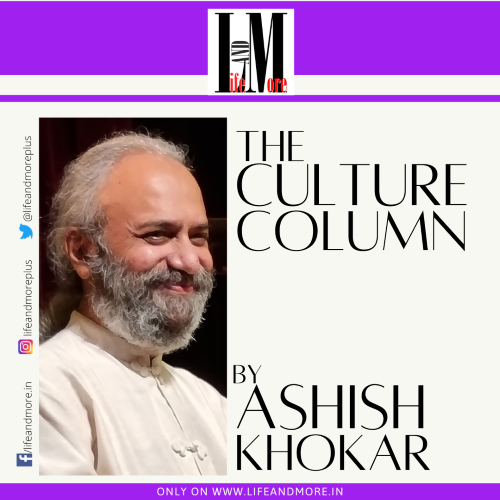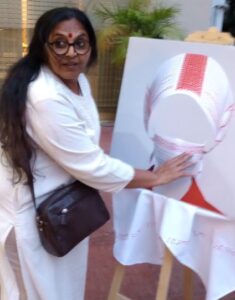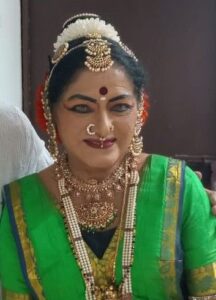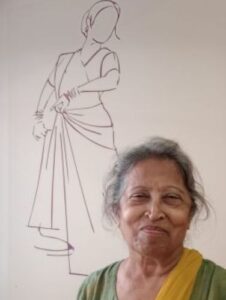HCG ART HUB

Kalidasa once said: Creepers and artists need support. Let me refresh your memory. The Gupta rule (4th -5th century) saw the rise of Kalidasa, a classical Sanskrit and Prakrit author, easily considered one of the greatest poet and playwright of ancient India. His plays and poetry are primarily based on Hindu Puranas and philosophy. His surviving works consist of three plays, two epic poems and two shorter poems. Abhigyanasakuntalam, Kumarasambham, Malavikagnamitra and Meghadootam (the cloud messenger must have metamorphored into iCloud! today) are a must for every student and connoisseur of literature, poetry and theatre. Abhijñānaśākuntalam was one of the first works of Indian literature to be known in Europe. It was first translated into English and then from English into German, where it was received with wonder and fascination by a group of eminent poets, including Herder and Goethe. Kālidāsa’s works continued to evoke inspiration among the artistic circles of Europe during the late 19th century and early 20th century. The story is a variation of the popular legend that Kālidāsa was mentally-challenged at one time and that his wife was responsible for his transformation. Kālidāsa, a mentally-challenged shepherd, is married to Vidyottamā, a learned princess, through a conspiracy. On discovering that she has been tricked, Vidyottamā banishes Kālidāsa, asking him to acquire scholarship and fame if he desires to continue their relationship. She further stipulates that on his return he will have to answer the question, Asti Kaścid Vāgarthaḥ (Is there anything special in expression?), to her satisfaction. In due course, Kālidāsa attains knowledge and fame as a poet. Kālidāsa begins Kumārsambhava, Raghuvaṃśa and Meghaduta with the words Asti (there is), Kaścit (something) and Vāgarthaḥ (spoken word and its meaning) respectively. (source: wikipedia)
Much about his life is unknown except what can be inferred from his poetry and plays. His works cannot be dated with precision, but they were most likely authored before the 5th century CE during the Gupta era. Dasam Granth, the second scripture of Sikhs written by Guru Gobind Singh, mentions seven Brahma avatars – Kālidāsa is one of these.
So why this lengthy intro to art hub of art? Well, art and artists need all the support today. How does a civilisation gets known? By its people. How are people quantified? By its culture. How is culture defined? By the level of its evolution in art, architecture, literature, poetry, theatre, dance, music and painting.
Art needs support and patronage. During ancient times, the kings gave that, then temples and other religious places and now government. Add corporate India. It is here where the work of enlightened group like the Tata or Birla at the high level or ITC and HCG at another level, comes through.
HCG is Health Care Global. India’s top cancer care. It is the vision of Dr BS Ajaikumar of Mysore, who went global with his vision of affordable care for cancer patients and best treatment at low cost. Is that possible? Read his book to know his story.
His wife Bhagya Ajaikumar is today known as a painter-sculptor of repute and a patron- promoter of eminence. But she herself is very low key. That’s also a quality of the truly cultured! They don’t show off. Aman Nath of Neemrana group is also one such role model. So much work in restoration and conservation of old forts into heritage properties, he wears his many talents and gifts ah, ever so lightly.
Bhagya hosts art camps that create art that then feed the cancer patients welfare. Wow! How? The recent Art camp in Mysore, where nine countries – Lithuania, Romania Argentina, Germany, Taiwan, Malaysia, Lebanon, Montenegro and India featured, was unique.

Two artists from each of these countries sat and painted in Mysore for 10 days, with one day visit to Halebid and Belur to see its architectural wonders, showcased 50 works in Bangalore through Swasti Gallery. These included Ana Sofrance and Jelena Vusurovic from Montenegro, Antanas Obcarskas and Ugnius MotieJunas from Lithuania, Babita Das, Manoj MS, Tinku Das and Bhagya Ajaikumar from India, Cristina Lazar from Romania, Doris Hafner and Ute Faber from Germany, Huang Kuan Yu from Taiwan and Marisa Caichiolo from Argentina. The pool side gathering was cool. Babita Das had curated it with help from Swasti staff.
Babita Das, Curator of Mysore Camp
Such initiatives show three things: art connects people across borders. Two, it helps the needy and three, it enhances society and civilisation. Where will these artists ever get to visit India? Who will host them and exhibit their works? Give them respect!
Mysore rose up to give respect to its resident diva guru Vasundhara Doraiswamy, on her 75th. 15 days celebration, OMG and she still not tired. Seminar and Sunday gathering of 550 dancers, who got together and danced as though there was no tomorrow, and guests came from far and wide. To call an ancient dance style a baani – named after self, a person while still alive is a no, no – but great fun was had by all who attended. She stands celebrated. At 75, Vasundhara Doraiswamy is a role model in how to keep fit and dance finely-tuned as a fiddle. Her yoga helps her dance and bend it better than Beckham.
Vasundhara Doraiswamy
Respect is what artistes need the most. Dancers and musicians being democratic, never can raise funds, save some and create productions that can have repeat shows. In steps Art Hub, the brainchild of Kathak dancer Mukti Shri and her techno commercial (read, fund raiser! ) hubby Dr Srinivas Rao Mukku… Both originally from Pune now settled in Hyderabad. Mukti is a trained Kathak dancer too from Nad-Roop of guru Shama Bhate, who is today the most thinking dancer of all in terms of approach, attitude and art.
Let me explain. While all learn an art form, some don’t beyond what’s learnt. They use what basic they have learnt as fodder for their work. Maximum they’d change the rhythm (tala) pattern instead of dhamar (14 beat cycle) to 9.5! Or teen tal (16 beats) into 11. That’s expertise. Art comes when one goes beyond the set. So, take a theme that’s not attempted before like Shama Bhate did under the umbrella of ART HUB.
In Unnayan, she took up the case and cause of Thimakka, the tree lady of Karnataka. Her story runs to tell us a that a barren women can also give birth to hundred thousand trees! She with her farm help hubby did and covered 18km of a highway. PM Modi bestowed her with a Padamshri award. How thoughtful.
Guru Shama Bhate
Thoughtful it was of Guru Shama Bhate to this theme and build it around the trees of Bhandarkar Oriental Research Institute, Pune. In the open setting where art began and where forest finished one could not tell. Genius.
Artists in India and artistes (that’s the difference? With E at end is performing; without E is fine like painting, sculpting etc) need support. The state can’t do everything. Why should it? Society must put a premium on it. It shows it cares too. When you buy a painting, you support the artist of course, the gallery
So when you as a dancer -choreographer create an art work, who will pay production costs, your time ( even if your talent is free!) and all artistes? Then hire hall, sell tickets and reach out. Art Hub did exactly all of that for Unnayan, the Shama Bhate production premiered recently in Pune, after a test run in Bangalore. Partners of Art Hub are Dr Shrinivas Rao Mukku and Mukti Shri and they are connected to a London-based organisation that connects to many. Organisations such as these are needed more and more.
Jayamahal Palace Hotel
Bengaluru just witnessed the start of 15 day jamboree called the Bengaluru Habba. The idea is to create the Madras Margazhi season in a more eclectic and modern way because B’lore is just that. This is home to many and a melting point, the New York City of India. Mumbai is no more that, it’s just survival. The cosmopolitan nature is more evident of namma Bengaluru and arts and culture give it that boost.
Ashish Khokar uses humour to make serious points on our culture and society. A historian by training, artiste by disposition and organiser by nature ,in his spare time he has also published /authored 50 books; over 5000 articles in mainstream media in the last 45 years and served many cultural institutions in India and abroad, making him a renaissance man. He is also a pioneer in arts administration and international culture education since the 1980s. He is hailed as the gold standard of archiving, documentation and dance history. For full bio : www.attendance-india.com






2 Comments
Thank you very for such an informative insight of Art & Artists.
I recently read Ashish Kokkar’s column titled **”HCG Art Hub,”** which, as always, intertwines art, artists, literature, dance, and music with compelling narratives. His unique writing style feels like a journey on a train, where each stop represents a different aspect of the vibrant world of art and culture.
In this article, Ashishji begins with a story about **Kalidasa**, framing the discussion around significant events and personalities, including the **HCG Art Camp**, the 75th birthday of **Vasundhara Doraiswamy**, and the **Bangalore Habba**. The column resonates with the message that both “creepers and artists need support,” highlighting how individuals and organizations contribute to the arts.
His insights are thought-provoking: “Art connects across borders,” and he emphasizes the importance of acknowledging those who host and support artists. He also touches on contemporary issues, such as the transformation of Mumbai and the inspiring story of **Thimmakka**, who planted thousands of trees despite her humble circumstances.
Ashishji honors everyone involved in the arts, from the smallest contributors to the most significant patrons, illustrating how they embody Kalidasa’s ideals. His columns are a reminder of the collective effort that keeps the train of art and culture moving through time and generations.
Thank you, Ashishji, for your continued inspiration and for opening our eyes to the richness of art and its community.